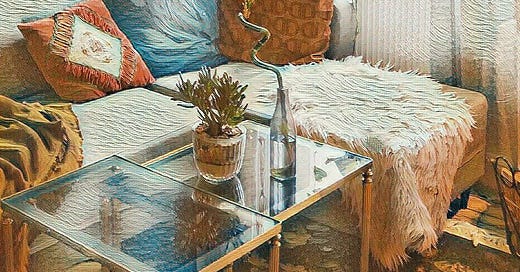Hello, everyone! It’s AUDIO time, for those of you who prefer to listen rather than read. As always, I’ve included a full transcript below. Thank you for being here!
P.S. I’m testing some new branding. If you have any thoughts about it, please share them with me.
[TRANSCRIPT]
What if we treated social networks like parks and streets — online public places where anyone can gather — and our own social media accounts as our homes on the web. How would that transform what we post and the ways we interact in digital spaces?
Hi everyone. Welcome to Digital Hope Talk. I’m Lauren Hug and I thank you for listening and being willing to explore ways to better navigate our digital world together.
This is Episode 5: Digital Spaces as Human Places: translating physical world behaviors to online encounters.
When I first fell in love with digital spaces, I used to explain them as “digital cocktail parties.” If you stand alone in the corner not talking to anyone, they’re way less fun. You’ve got to get out there, introduce yourself, and interact to reap the full benefit of online engagement.
I’ve since realized what an extroverted approach that is. Not everyone wants to put themselves out there in such a direct way. It’s not always easy to insert oneself into a pre-existing conversation or clique.
Contemplating digital grace, however, for my most recent book challenged me to think about digital spaces in a different way.
Our physical homes reflect our personality, style, interests, and life experiences. They’re full of things that make us happy or feel relaxed and at ease. We don’t fill them with things that make us angry and frustrated. Most of us don’t plaster our walls with political posters. Even if we have a fair amount of political stuff, we’re likely to have many other artistic or nostalgic pieces mixed in.
Populating our social media accounts with posts that reflect a broader spectrum of who we are—especially things that bring us joy—opens the door to positive online interactions instead of conflict-laden, outraged ones.
Thinking about other people’s social media accounts as their home on the web changes how we engage them in online spaces as well. We don’t walk into another person’s home and loudly announce how much we dislike or disapprove of their décor. We don’t criticize the artwork they display or ridicule the books we find on their shelves. We inherently know that it would be rude of us to do so, no matter how strong our opinions about what we encounter.
Yes, social media platforms provide a format for reacting and commenting on the things people choose to post to their feeds. But it’s a mistake to assume a person welcomes that kind of interaction simply because they’ve posted something on social media. As An Xioa Mina explains in Memes to Movements: How the World’s Most Viral Media is Changing Social Protest and Power, people don’t share things in digital spaces because they’re interested in information and debate. They share because they’re demonstrating who they are.
Social media posts – even the ones that appear “informational” or “public-facing” – are personal reflections of the sharer. Just like all of the things you would find in their home.
Before reacting to a post, take a minute to think about what you would do or say if you encountered it hanging on the wall of the person’s home. Would you say anything at all? Would you be more likely to ask a question about its significance and why the person has it on display? Or would you start right in with objections, criticisms, or concerns? Would it be enough for you to immediately walk out or to later decide that you wanted nothing more to do with the person?
This thought exercise re-categorizes social media interactions as encounters with fellow human beings in their own space rather than a dehumanized public debate.
Likewise, thinking about social networks as the digital equivalent of parks and streets helps us re-frame how we can navigate those spaces in community-conscious ways. As with physical public spaces, digital spaces are only as safe and welcoming as the investment we make in them. An abandoned park quickly becomes overgrown then dangerous as nefarious activities spring up in the absence of community interactions.
Digital public spaces are no different. They require care and cultivation to become and remain places where people want to gather.
What are the digital equivalents of picking up trash, beautifying public spaces, cultivating places that have been abandoned, interacting with the humans we encounter, and intervening when some choose to disturb the peace?
Analogizing online encounters to situations we already navigate in the physical world can help us develop and deploy digital etiquette that fosters better online interactions.
I’d love to hear your thoughts on this.
How can you make your social media accounts more like your home on the web?
How can you interact with people as if their accounts are their home?
How can you make our public digital spaces better?














Share this post